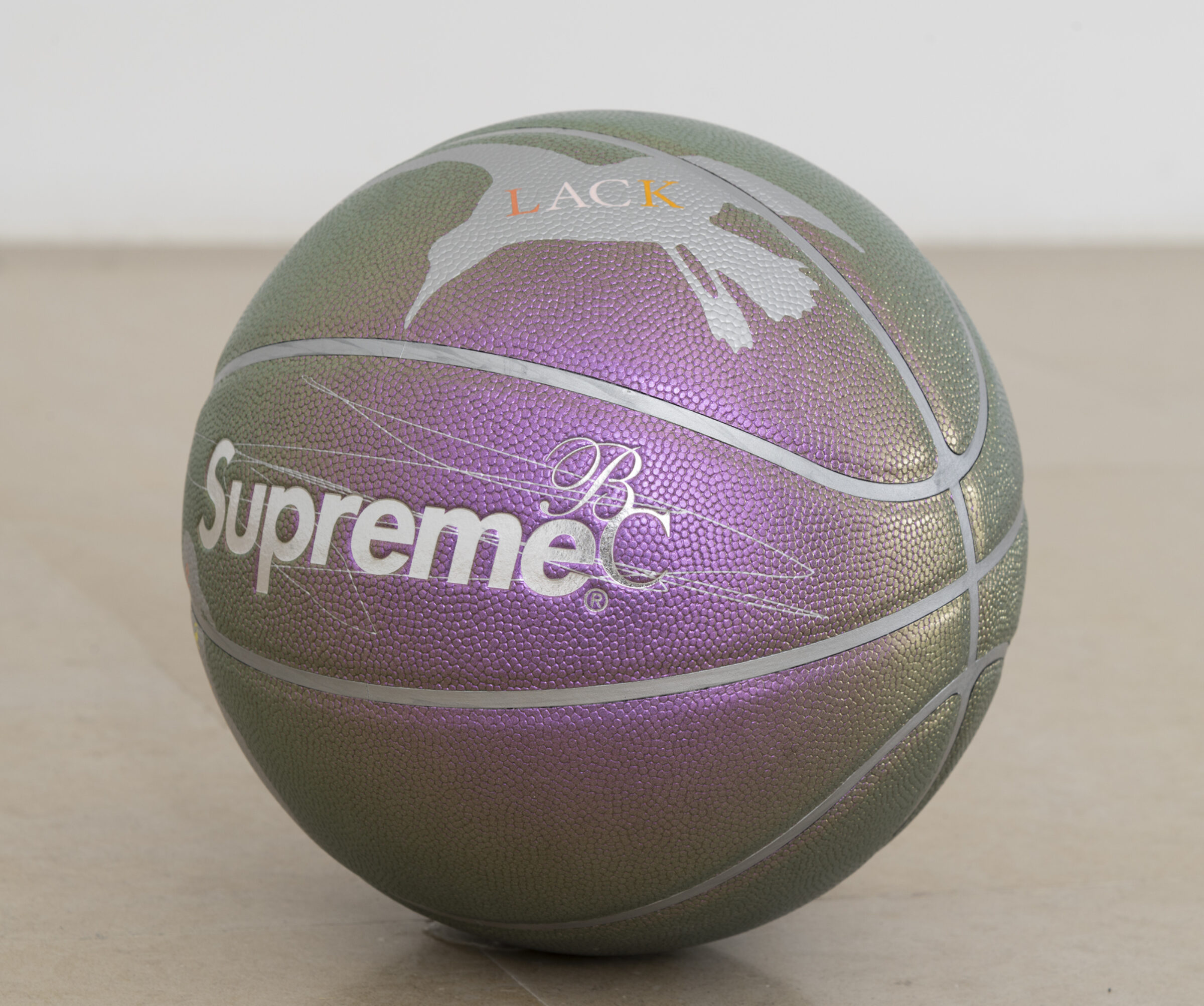Art Out of Time: Three Reviews

Bernadette Corporation, Untitled, 2023. Courtesy of Greene Naftali.
This week, three reviews on damaged art, art out of time, art of our time, and enjoying the void.
We’re in a particular phase of “pandemic art” now—I don’t mean work that portrays the spread of disease (I’ll leave The Last of Us to another writer) but the work that artists made while they lived in hibernation: writers at their desks with no social obligations to draw them out into the city, artists in their studios with the endless horizon of hours receding. Now they are showing what they made. Tara Donovan’s stunning “screen drawings,” on view last month at Pace Gallery in Chelsea, are a project begun in that period. The “drawings” are made from typical aluminum insect screens, cut and tweezed into intricate geometric patterns—layered lines, swirls, and cutouts—that shimmer and morph as you walk through the gallery. They are subtle optical illusions cut from the humblest everyday material. Their connection to the period of “high quarantine” strikes me immediately: time spent looking out the window onto silent streets, time spent feeling intensely aware of the need for protection. The discourse around “screen time” is of course fatiguing, but Donovan’s drawings for me reinvigorate the multiple meanings of the phrase. Before we came to understand the screen as the portal that brought the outside infinity into our personal space, screens were more often for keeping something out: a fugitive look, a bothersome fly. (I saw Donovan’s work around the same time as I became aware of an interesting but disquieting TikTok trend of overlaying TV clips with ASMR videos, in case you didn’t have enough stimulation.) What else do they continue to separate from us? A special quality of Donovan’s manipulations is that no photo of them can do them justice—they look good in two dimensions, but in person they are almost hypnotic in their immersive power. They’re hardly capturable as digital artifacts, and so much the better.
—David S. Wallace, contributing editor
Going eight floors up the elevator at Greene Naftali on my lunch break and out into the open white space that recently housed the gallery’s Bernadette Corporation exhibition felt a lot like walking into God’s office on his break from Creation: there were whiteboards covered with half-assed frescos and half-erased flowcharts; pennies, some stacked neatly, others laid out in the shape of man; on the white plinths supporting them, more doodles of equations, apples, and names begun and then abandoned. It all connects, of course, somehow—this stuff, these ideas. The scribbles suggest motion and relation, formal analogies (between pie charts and pennies, currency and chemistry), but the forces of association seem to give out halfway. The only thing left whole was an oil-slick-iridescent Supreme-branded basketball, spherical and sparkly, that seemed to have bounced straight out of those equations and onto the floor. God must have gotten bored setting up gravity, orchestrating economies, making paintings, and doing anti-capitalist art critique. But he still likes to play—and shop. The effect, difficult to execute and surprisingly lovely, is of a beautifully bad throw of the ball: an immaculate weak gesture, conceptually and aesthetically. I didn’t mind; such are the times. If I were God I’d take a break, too. Sunlight still flooded the mostly empty room. I wished it had all been even weaker, that there’d been couches and a coffee machine, to make the art recede even further into the scene of the God-office/gallery, and to make it easier for me to sit around and play on my iPhone. The show closed last weekend, but that’s okay. Its brilliance is that it was only half-there to begin with. You can still go answer your emails on the eighth floor of Greene Naftali on your lunch break if you work in Chelsea.
—Olivia Kan-Sperling, assistant editor
Lately, I’ve been rereading Molly Brodak’s 2020 poetry collection The Cipher. I first read it more than a year ago and have found myself returning to it ever since, whenever I’m in need of a line to carry me through the day. This time, I’ve been drawn to moments when opulent, lush textures adjoin absences or voids. There’s the extravagant feast of “The Babies,” for example, rendered in exquisite detail but forbidden to eat. In “Axiom,” a cloth of yellow silk enfolds the empty space where the Ark of the Covenant would be kept, were it ever recovered or had it ever even really existed. The guard at the door watches over an empty chamber containing only the silk, and, at times, a ray of light. Describing the inspiration for her poem “The Flood”—which describes a Paolo Uccello fresco of the Noah’s Ark, which has itself been damaged by a real flood—she writes: “I don’t know if I would like the painting as much if it hadn’t been damaged. It is another painting now.” This reminds me of another one of her lines, from “Conversation”: “I imagined / a bolt of pink waterstained silk / in place of me, being / loved.” It is a marked object—textured with the evidence of utility, accident, or event—with which Brodak chooses to represent herself. In her work, things that change are never ruined; they are merely renewed as variations on themselves.
—Leena Mahan, reader
Copyright
© The Paris Review
